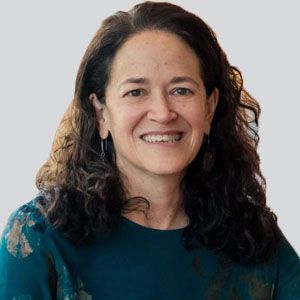Article
NurOwn Stromal Cell Therapy Continues to Show Positive Data in Less Severe ALS
Author(s):
After removing participants at higher risk of reaching a floor effect of the ALSFRS-R, those treated with NurOwn demonstrated a higher rate of clinical response and less function lost across 28 weeks than placebo.
Merit Cudkowicz, MD, MSc

Consistent with previous reports, sensitivity findings from the phase 3 trial (NCT03280056) assessing BrainStorm Cell Therapeutics’ NurOwn therapy showed a positive statistical trend in subgroups of patients with less severe forms of amyotrophic lateral sclerosis (ALS).1,2
Presented at the 2022 Annual Northeast Amyotrophic Lateral Sclerosis (NEALS) Meeting, November 1-3, in Clearwater Beach, Florida, the poster included data on the floor effect of the agent, pre-specified subgroup analyses, and post hoc analyses to account for ALS Functional Rating Scale-Revised (ALSFRS-R) floor effects. The findings were in line with BrainStorm’s announcement in August, in which the company claimed new clinical analyses strengthened the phase 3 study, and may potentially prompt a biologics license application.
Led by Merit Cudkowicz, MD, Msc, the post hoc sensitivity analyses focused on minimizing the ALSFRS-R floor effect by identifying and excluding those at highest risk of being impacted by a floor effect. To do so, investigators applied the Total Score Threshold (TST), which removed 23% (n = 44) of the cohort who had ALSFRS-R scores less than 25, and Item Level Threshold (ITL), which removed those with a baseline score of 0 or 1 in at least 5 of 6 of the ALSFRS-R’s Fine and Gross Motor scale items, or 16% (n = 30) of the trial cohort.
The primary end point was a responder analysis defined as the percentage of participants with at least a 1.25 points/month improvement on ALSFRS-R after treatment with NurOwn. When applying the TST and ILT, 34.7% and 35.4% of NurOwn-treated patients, respectively, achieved the primary end point, compared with 20.5% and 22.5% of those on placebo (P = .053 and P = .035). The secondary end point—average change from baseline to week 28 in ALSFRS-R—also continued to favor active treatment. After utilizing TST and ILT, patients showed average changes of –4.82 and –4.6, respectively, compared with changes of –5.98 and –6.08 for those on placebo (P = .250 and P = .125).
Cudkowicz, chief of neurology at Massachusetts General Hospital, and director of the Sean M. Healey & AMG Center for ALS, said in a statement, "We have learned a lot about both the clinical and biological (biomarker) effects of NurOwn in people with ALS. This presentation provides new insights into the NurOwn phase 3 trial demonstrating the consistency of treatment effect with NurOwn."2
At the end of the 28-week treatment period, 32.6% of the original cohort demonstrated a response compared with 27.7% of those on placebo (P = .453). Using a prespecified subgroup (n = 58) with less advanced disease, indicated by ALSFRS-R scores of at least 35, 34.6% of these patients experienced a clinical response vs 15.6% of those on placebo (P = .305). Similarly, the average change in ALSFRS-R was –1.56 for the subgroup and –3.65 for those on placebo (P = .050) vs changes of –5.52 and –5.88, respectively, for the overall cohort (P = .693).
Furthermore, results from the analyses showed that NurOwn-treated participants with a baseline ALSFRS-R greater than 26 have between 15% to 20% higher response compared with placebo. Similarly, these patients have at least 2 points of function preserved compared with placebo (P ≤.05).
"Our confidence in NurOwn continues to grow as we conduct further analysis of the phase 3 data," Stacy Lindborg, PhD, executive vice president and chief development officer, BrainStorm, said in a statement.2 "Two orthogonal approaches designed to account for ALSFRS-R's inability to accurately assess disease progression in patients with advanced ALS demonstrate a statistical trend towards a clinically meaningful treatment effect with NurOwn, and one that is consistent with the prespecified subgroup of participants with less advanced ALS at baseline (ALSFRS-R ≥35). We believe this consistency, together with the biomarker data we reported last month at the ALS ONE Symposium, adds weight to the important conclusions we can draw from our new analyses."
Click here for more coverage of NEALS 2022.





